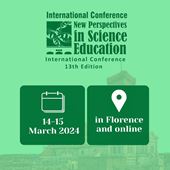Stimulating Students’ Motivation through the GoScience Project
Anca Colibaba, GR.T.Popa University / EuroED Foundation (Romania)
Anais Colibaba, Trinity College Dublin (Ireland)
Irina Gheorghiu, Albert Ludwigs Freiburg University (Germany)
Ovidiu Ursa, Iuliu Haţieganu University of Medicine and Pharmacy Cluj (Romania)
Abstract
The article is a study of the Erasmus+ European project “GoScience– creativity and enhanced comprehension in science teaching and learning” (2017-1-BG01-KA201-036209), whose main aim is to stimulate students’ motivation to study science by enhancing their comprehension through creative pedagogical tools commonly used in humanities – story telling, theatre performances, dances, graphics or videos. The project focuses on the role that comprehension has in learning and highlights the need to develop a youth culture based on comprehension. The project’s activities and tools increase students’ creativity, which makes scientific knowledge better understandable and thus increases the probability of implementing it in real life (increased functional literacy for students). The article gives insights into the project’s objectives, methodology and teaching and learning tools as well as its activities and main outputs. The project’s materials enable teachers to control the scientific relevance of knowledge taught and learnt and to motivate students to work independently and take responsibility for their own education. The materials also stimulate students’ creativity and critical thinking skills and their active role in their own learning process, increasing their comprehension of science subjects; they support students at risk (of early school leaving, low achievements, students with migrant backgrounds, young people outside the education system) to learn better, achieve better results at school and most importantly learn difficult subjects such as science subjects in an easy and motivating way.
Keywords: science teaching, pedagogical tools, comprehension, motivation;
References:
 New Perspectives in Science Education
New Perspectives in Science Education


























